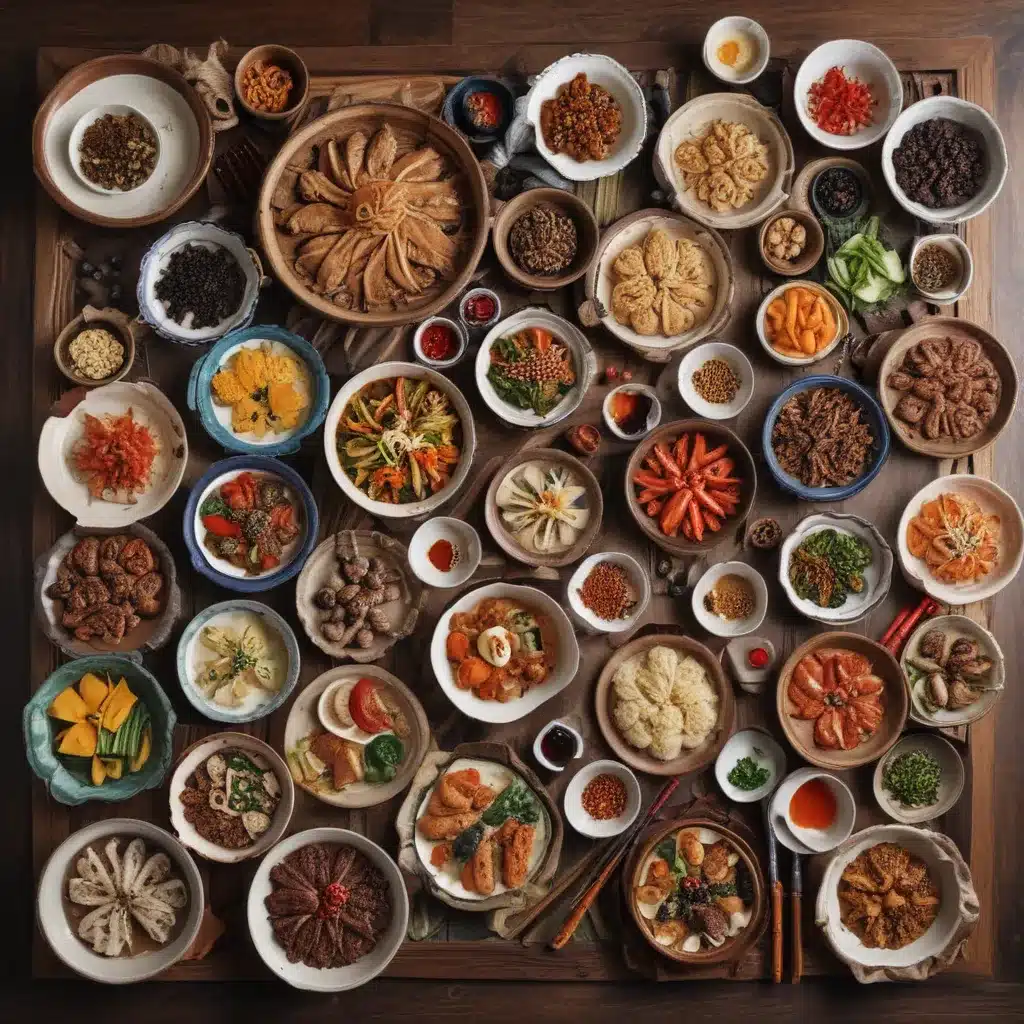
The Allure of Korean Flavors: A Culinary Journey
As I sit here in my cozy Boston apartment, the aroma of sizzling bulgogi and the symphonic blend of garlic, soy, and toasted sesame permeate the air. It’s a scent that instantly transports me back to my childhood in Seoul, where the flavors of Korea danced on my tongue and became inextricably woven into the fabric of my identity.
Growing up, I was always fascinated by the rich tapestry of Korean cuisine and the way it reflected the country’s dynamic history, traditions, and cultural influences. From the fiery kick of kimchi to the comforting embrace of bibimbap, each dish seemed to tell a story – a story of resilience, adaptation, and the unwavering spirit of the Korean people.
Uncovering the Roots of Korean Cuisine
To truly understand the essence of Korean cuisine, we must delve into its captivating past. The origins of this culinary tradition can be traced back to the ancient kingdoms of the Korean peninsula, where the interplay of geography, climate, and cultural exchange shaped the development of a unique and multifaceted food culture.
The rugged terrain of the Korean landscape, with its mountainous regions and coastal areas, played a pivotal role in shaping the ingredients and cooking techniques that would become hallmarks of Korean cuisine. The abundance of seafood from the surrounding waters, as well as the cultivation of grains and vegetables in the fertile soil, provided the foundation for the diverse array of dishes that have endured through the centuries.
The Influence of Dynasties and Invasions
As the Korean peninsula witnessed the rise and fall of various dynasties, each era left its indelible mark on the culinary landscape. The Goguryeo, Baekje, and Silla kingdoms, which flourished between the 1st century BC and the 7th century AD, were renowned for their sophisticated court cuisine, where the preparation of dishes was elevated to an art form.
During the Goryeo dynasty (918-1392 AD), the introduction of Buddhism and its emphasis on vegetarianism led to the development of temple cuisine, or “temple food,” a tradition that continues to captivate both locals and visitors today. The Joseon dynasty (1392-1897 AD), with its emphasis on Confucian principles, further refined and codified the culinary practices of the Korean elite, including the meticulous presentation and ritualistic serving of meals.
The Korean peninsula’s tumultuous history, marked by invasions and occupations, also left an indelible mark on the country’s culinary landscape. The Japanese occupation during the early 20th century, for instance, introduced the use of soy sauce, sugar, and new cooking methods, which were then adapted and incorporated into traditional Korean dishes.
The Evolution of Korean Cuisine in the Modern Era
As Korea navigated the challenges of the 20th century, including the Korean War and the subsequent economic transformation, its cuisine continued to evolve and adapt to the changing times. The influx of international influences, coupled with the growing prosperity of the Korean people, led to the emergence of a vibrant and dynamic food culture that blended traditional flavors with modern interpretations.
The rise of Korean pop culture, or “Hallyu,” has also played a significant role in the global popularization of Korean cuisine. As Korean dramas, music, and movies captivated audiences worldwide, the world’s appetite for kimchi, bibimbap, and other Korean delicacies grew exponentially. This “Korean Wave” has not only sparked a renewed interest in Korean culture but has also fostered a deeper appreciation for the country’s culinary heritage.
Experiencing the Flavors of Korea in Boston
As a Korean-American living in Boston, I’ve had the privilege of witnessing the city’s growing love affair with Korean cuisine. From the bustling Koreatown in Cambridge to the scattered pockets of authentic Korean eateries throughout the city, there is no shortage of opportunities to immerse oneself in the flavors of the Korean peninsula.
At Korean Garden, a beloved Korean restaurant in the heart of Boston, I can’t help but feel a sense of nostalgia as I savor the familiar tastes of my childhood. The menu, a symphony of traditional dishes and modern interpretations, invites diners to embark on a culinary journey that transcends geographical boundaries.
Whether it’s the addictive crunch of Korean fried chicken, the comforting warmth of a steaming bowl of tteokbokki, or the delicate balance of flavors in a carefully crafted bibimbap, each bite tells a story of the rich tapestry of Korean cuisine. It’s a celebration of the resilience, creativity, and cultural pride that have defined the Korean people for generations.
Preserving and Sharing the Korean Culinary Heritage
As I ponder the evolution of Korean cuisine, both in its homeland and in the vibrant food scene of Boston, I can’t help but feel a deep sense of appreciation and responsibility. It is my hope that the flavors and traditions of Korean cuisine will continue to captivate and inspire people around the world, fostering a greater understanding and appreciation for the unique cultural heritage of this remarkable country.
Through initiatives like Korean Garden and the countless other Korean eateries that dot the Boston landscape, we have the opportunity to share the stories, the histories, and the flavors that have been passed down through generations. By embracing and celebrating the diversity of Korean cuisine, we not only nourish our bodies but also our souls, connecting us to the rich tapestry of a culture that has endured the test of time.
So, the next time you find yourself craving a taste of Korea, I encourage you to embark on a culinary adventure that will transport you to the heart of this captivating country. Whether it’s a fragrant bowl of kimchi stew, a sizzling plate of bulgogi, or a delicate spread of banchan, let the flavors of Korea dance on your tongue and ignite your senses. In doing so, you’ll not only savor the delicious offerings but also unlock a window into the vibrant and ever-evolving world of Korean cuisine and culture.
